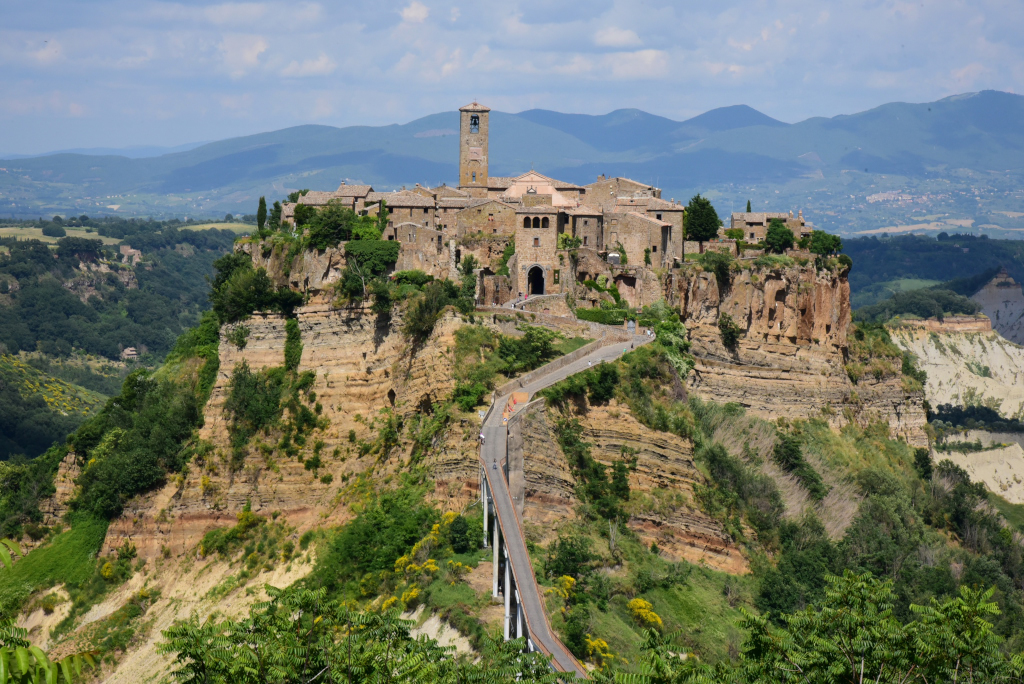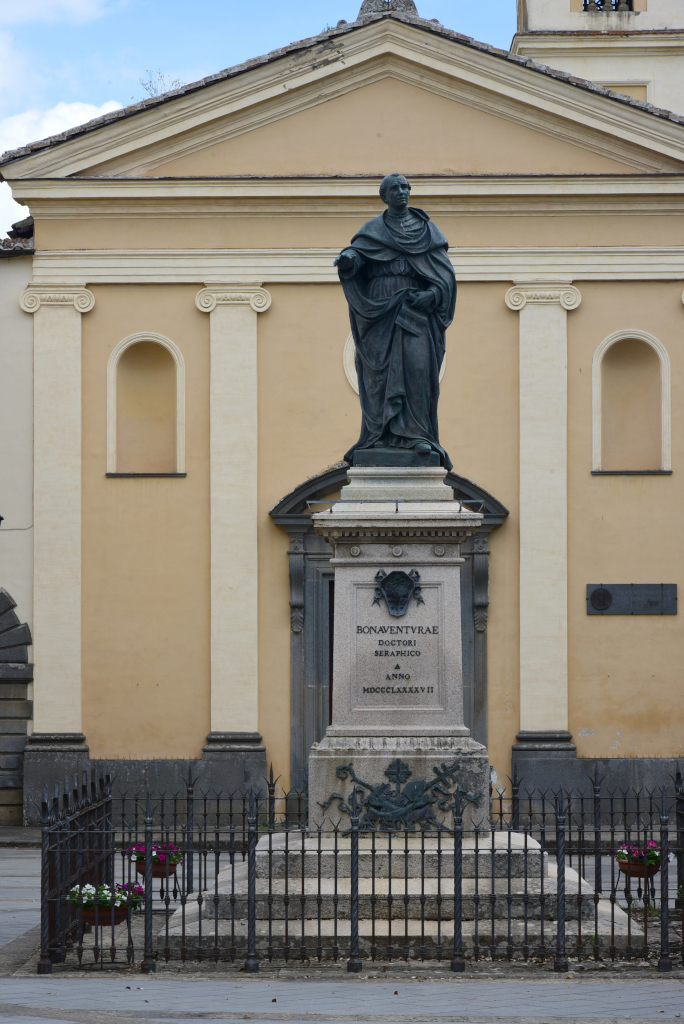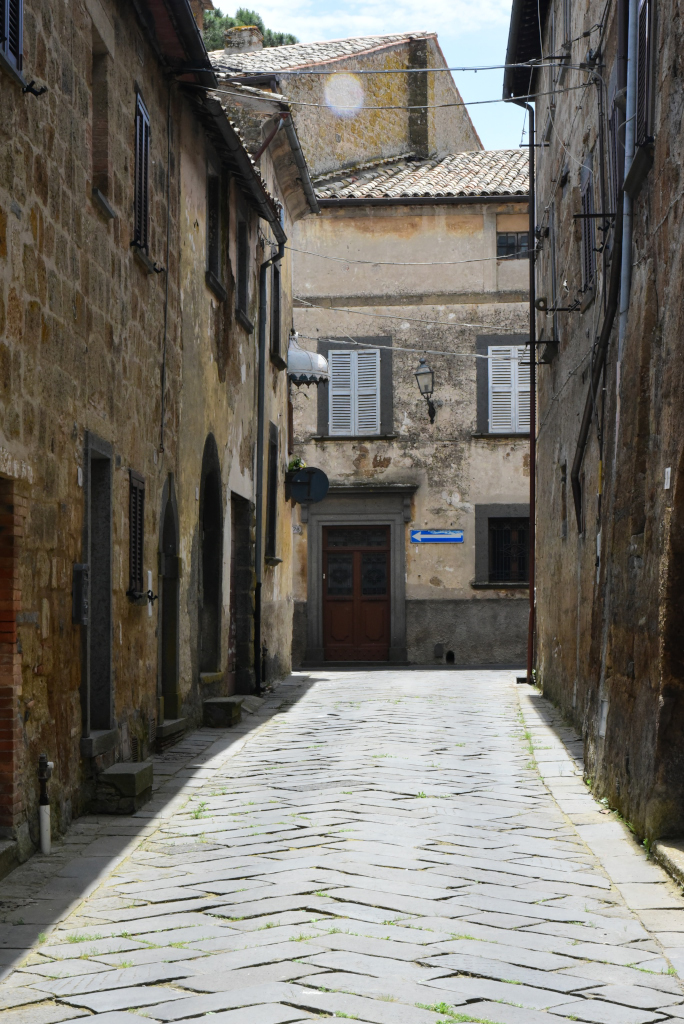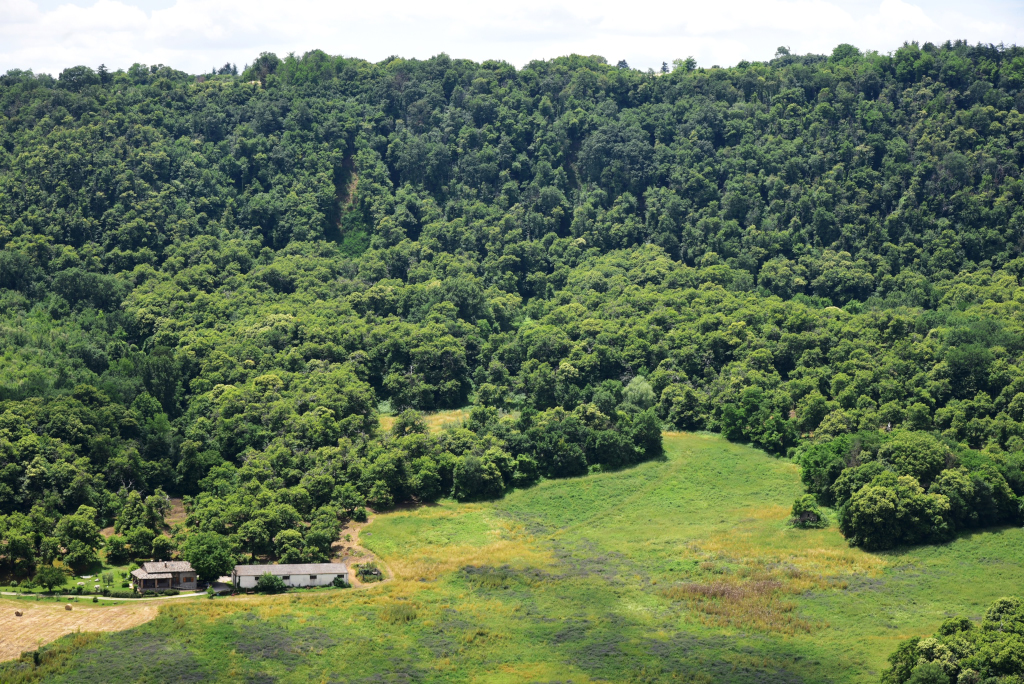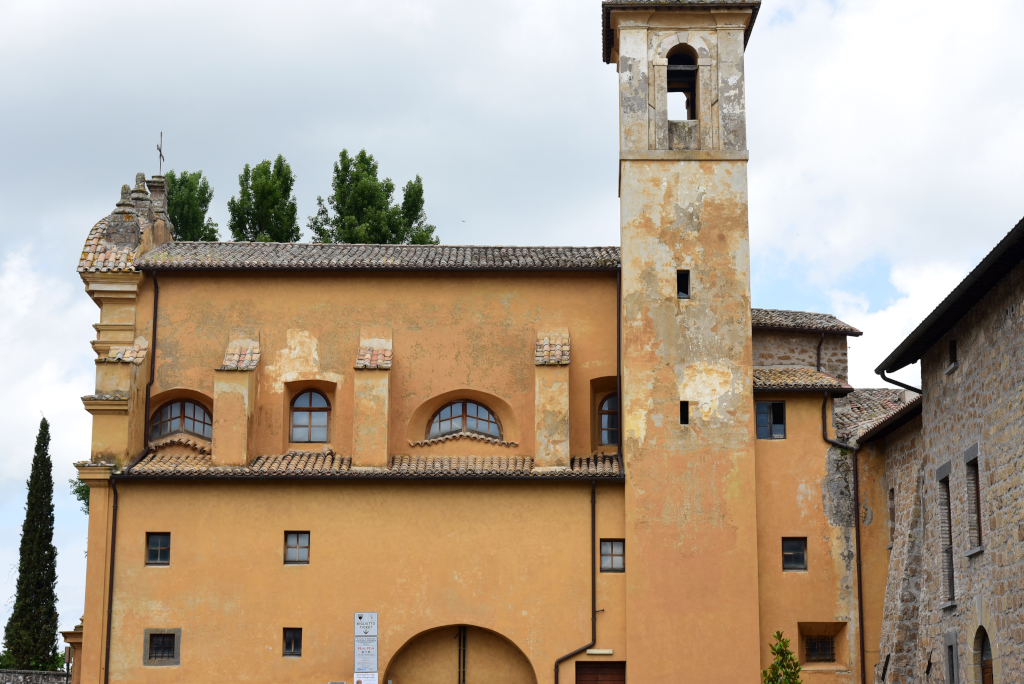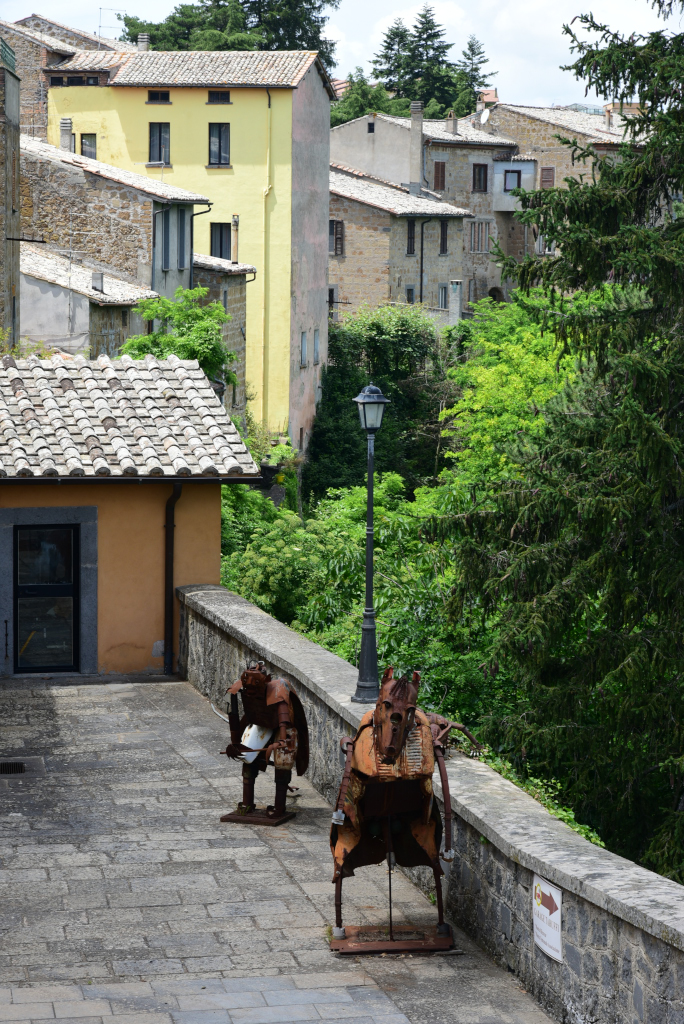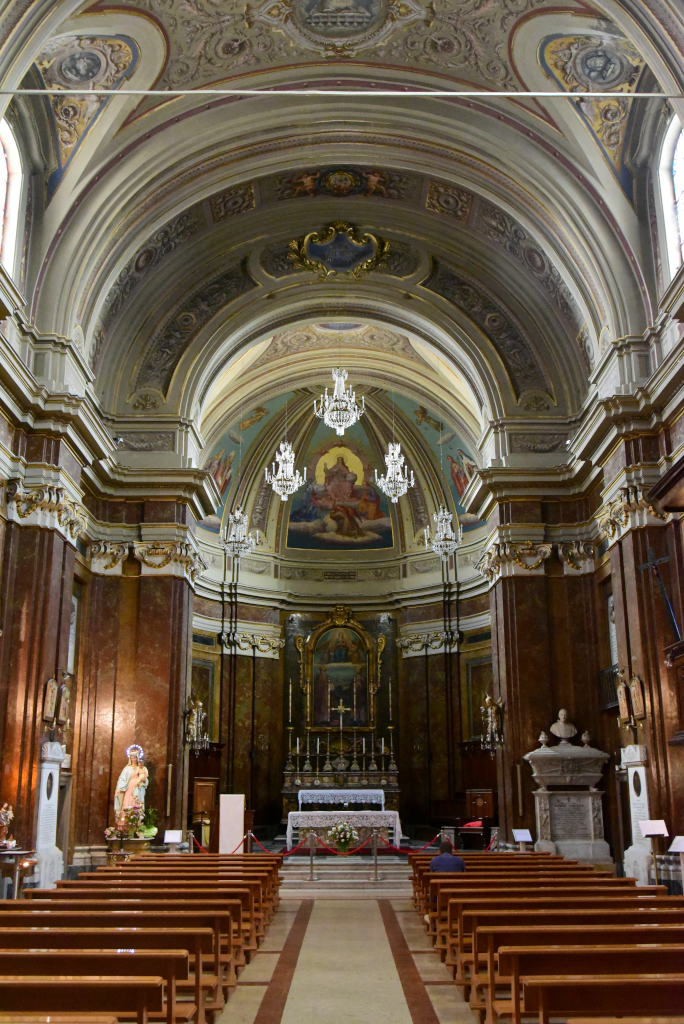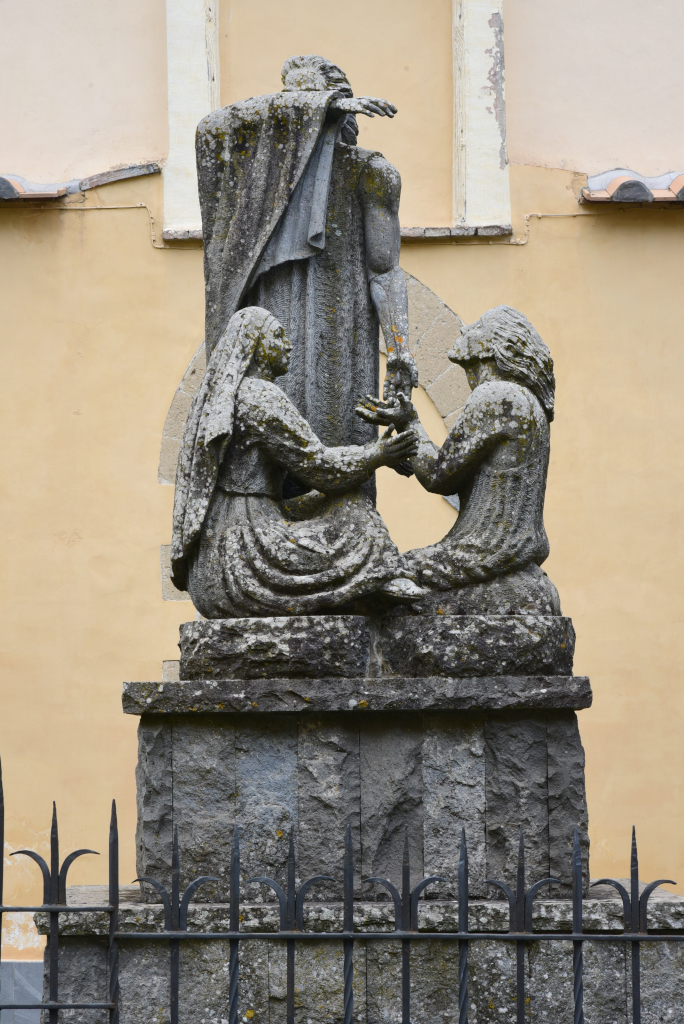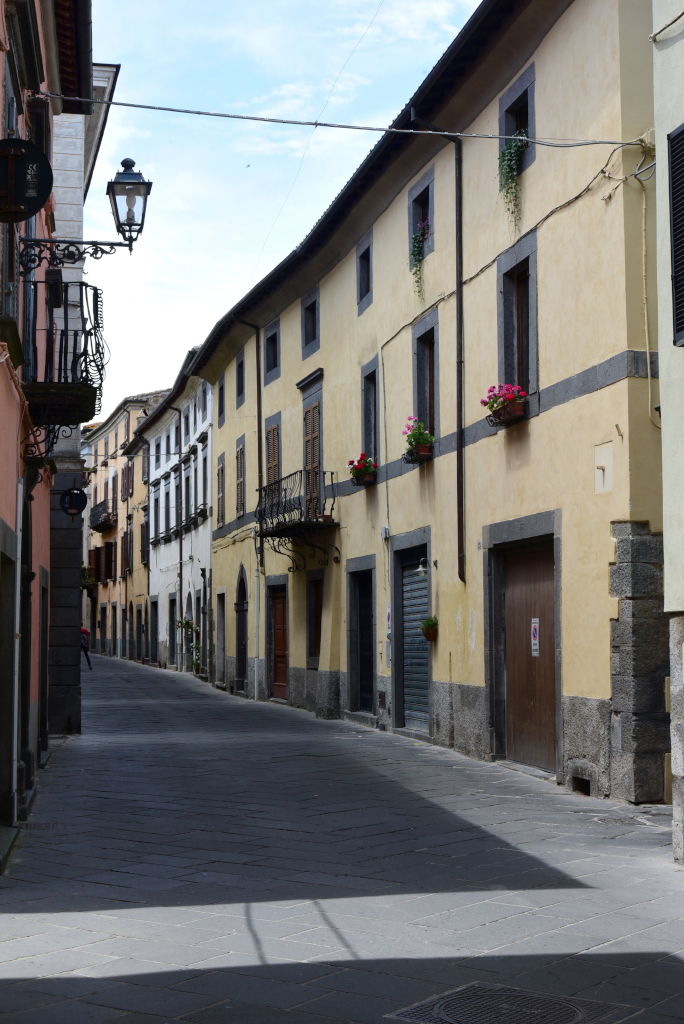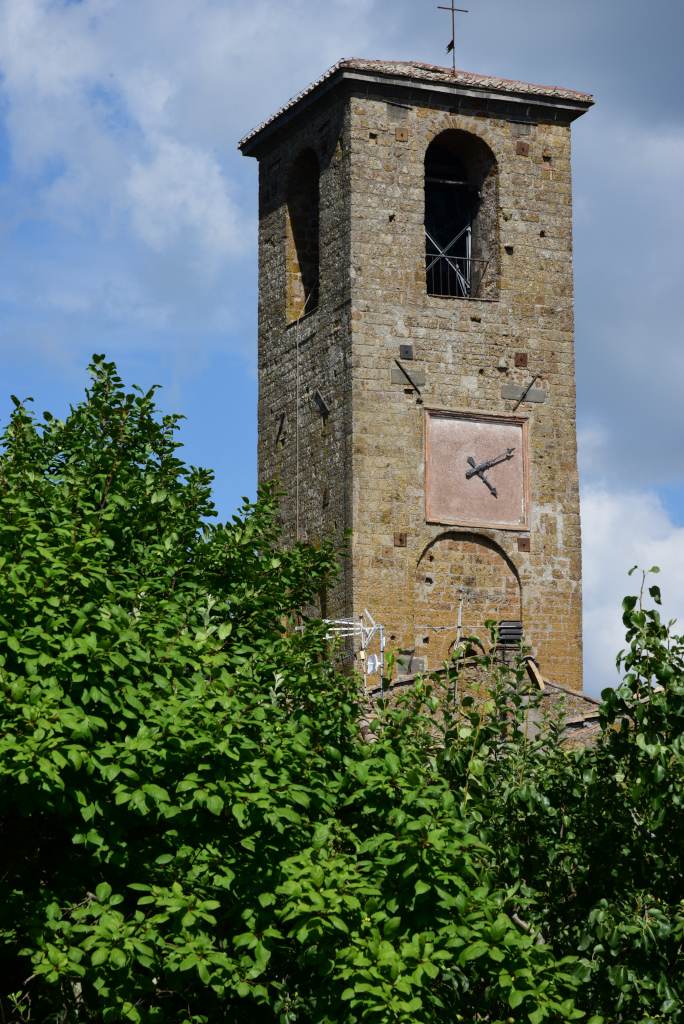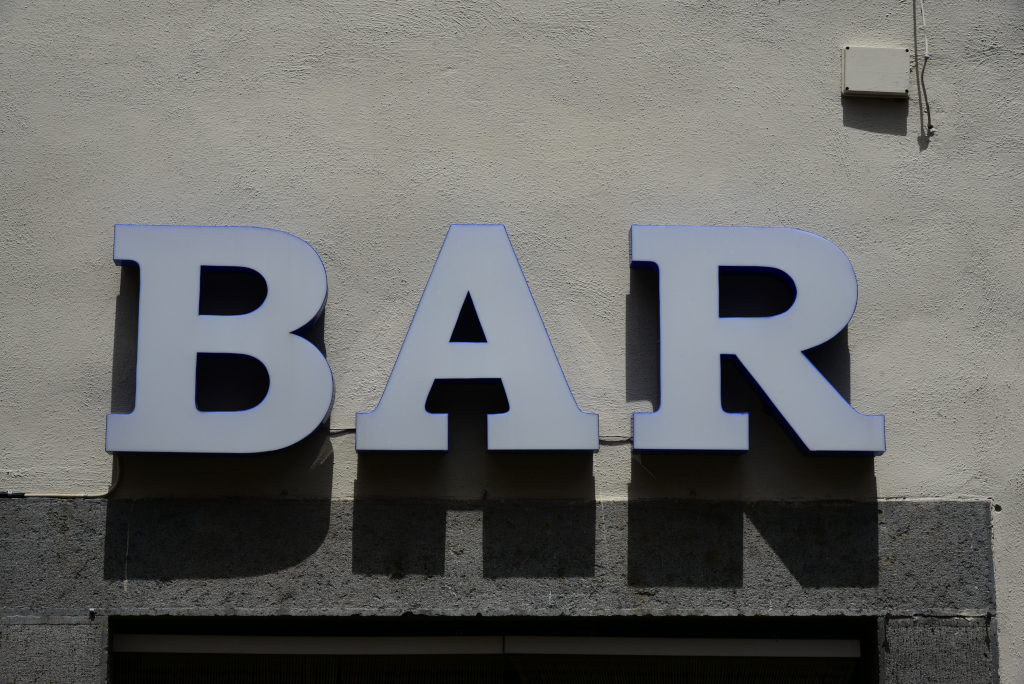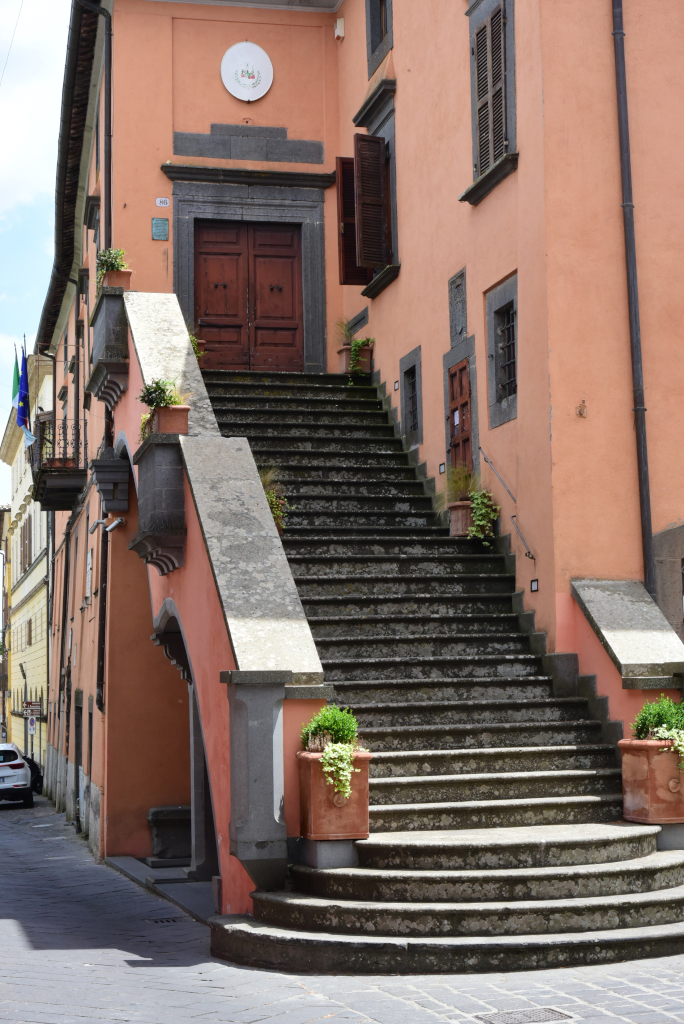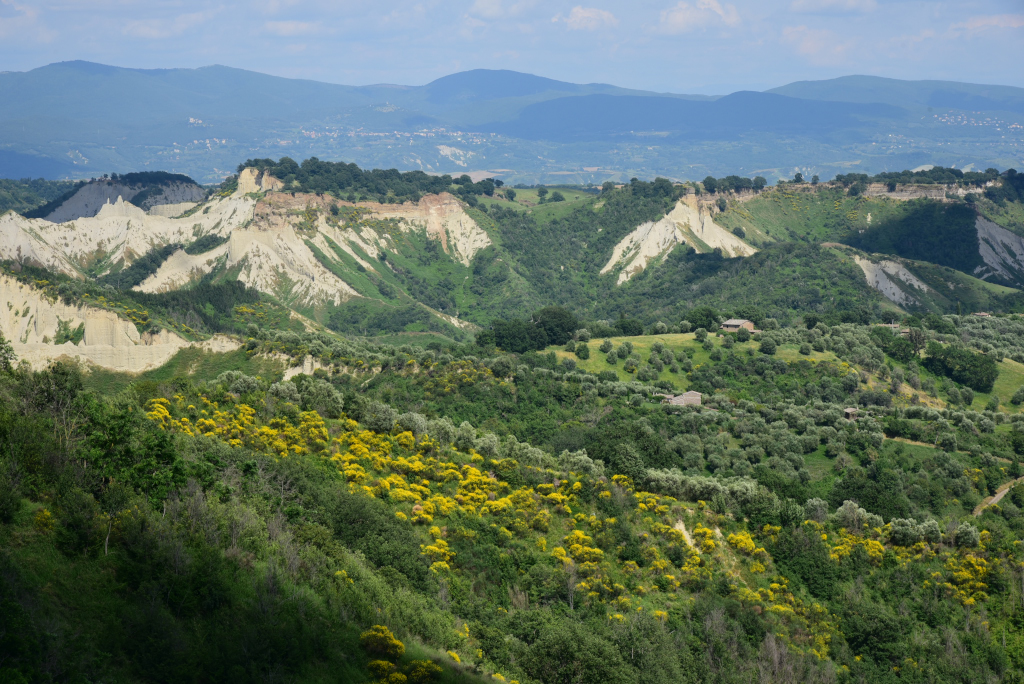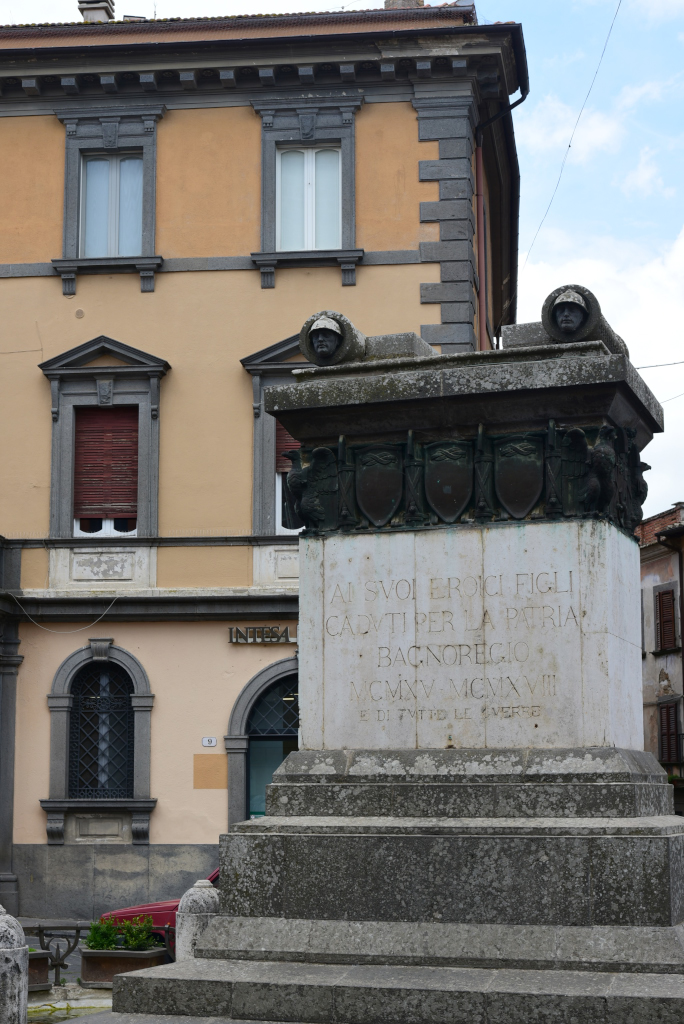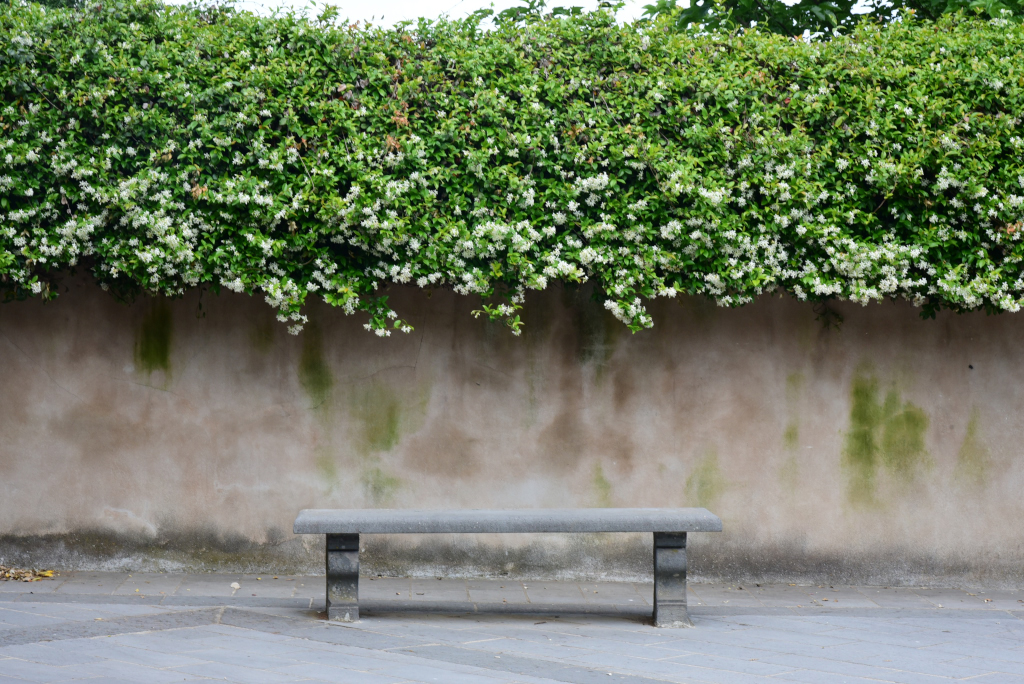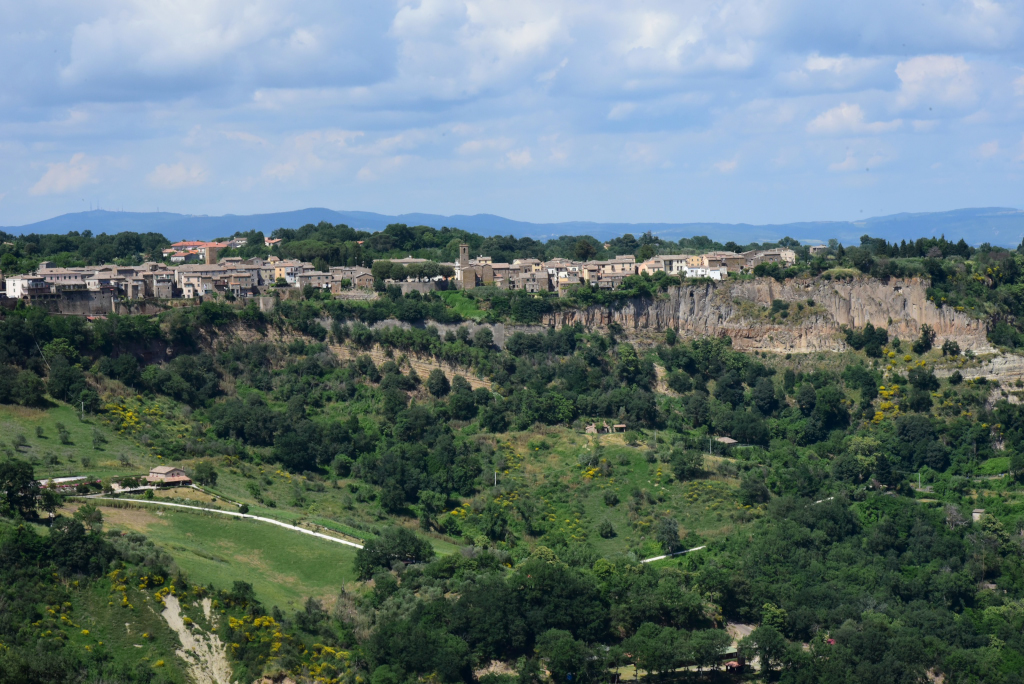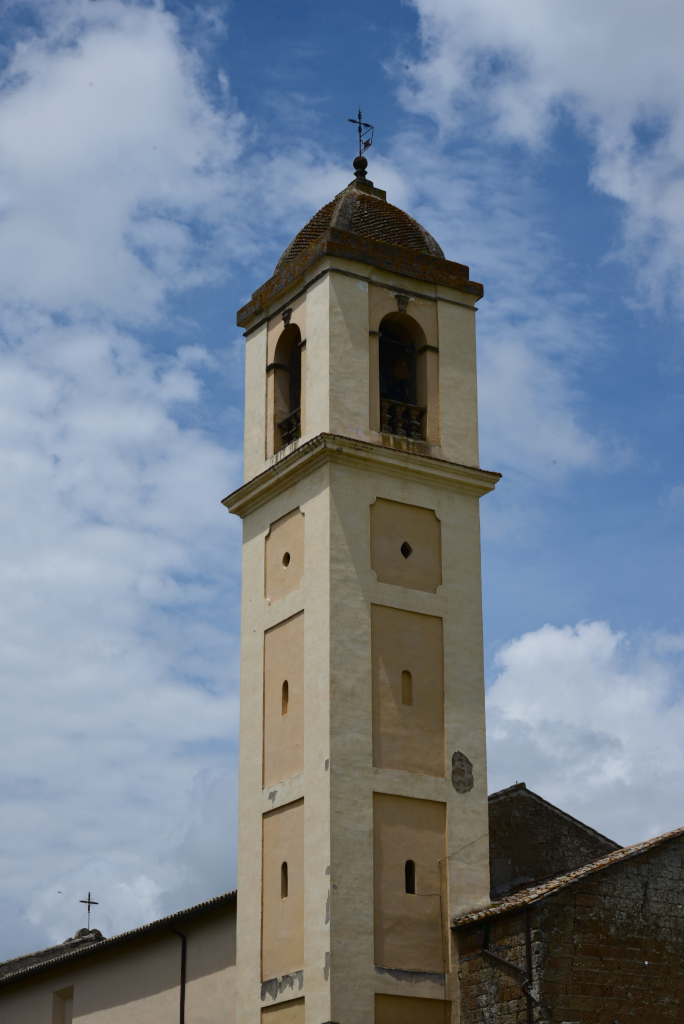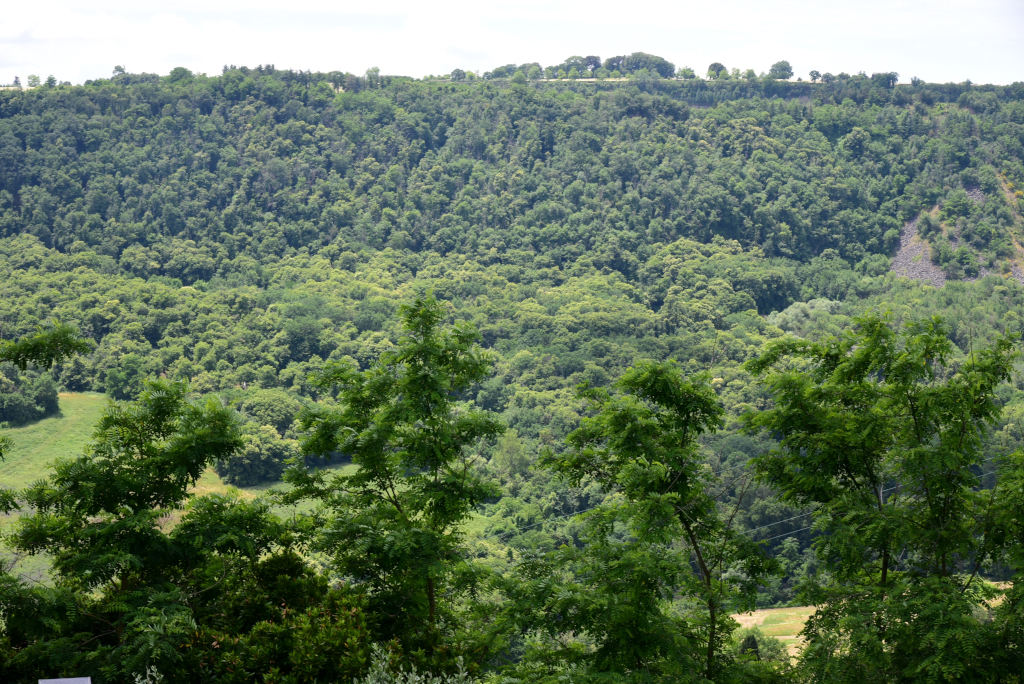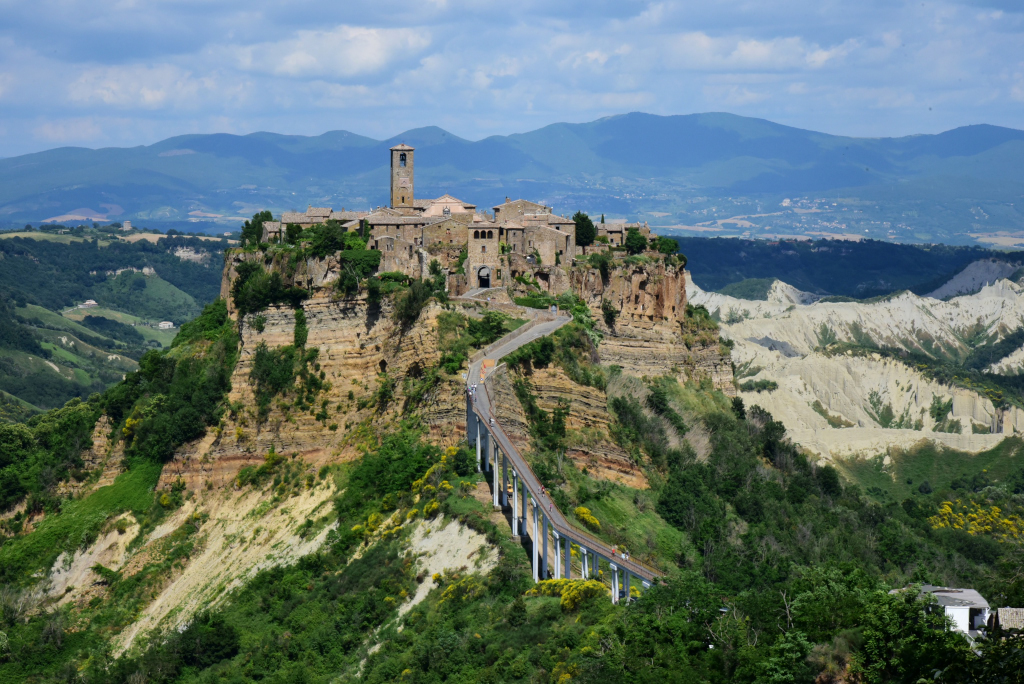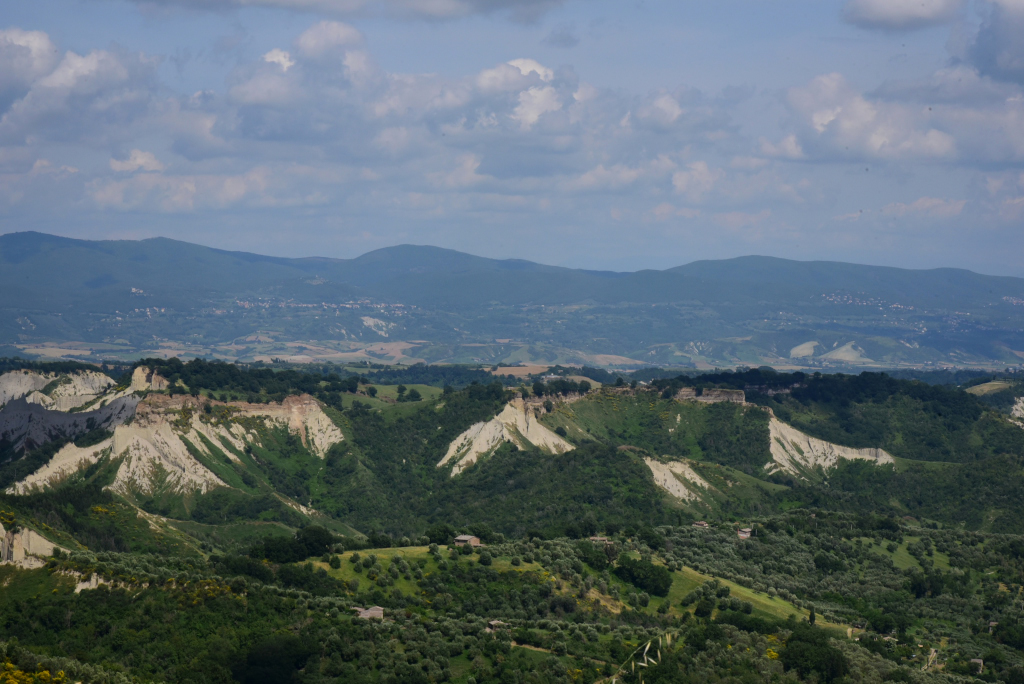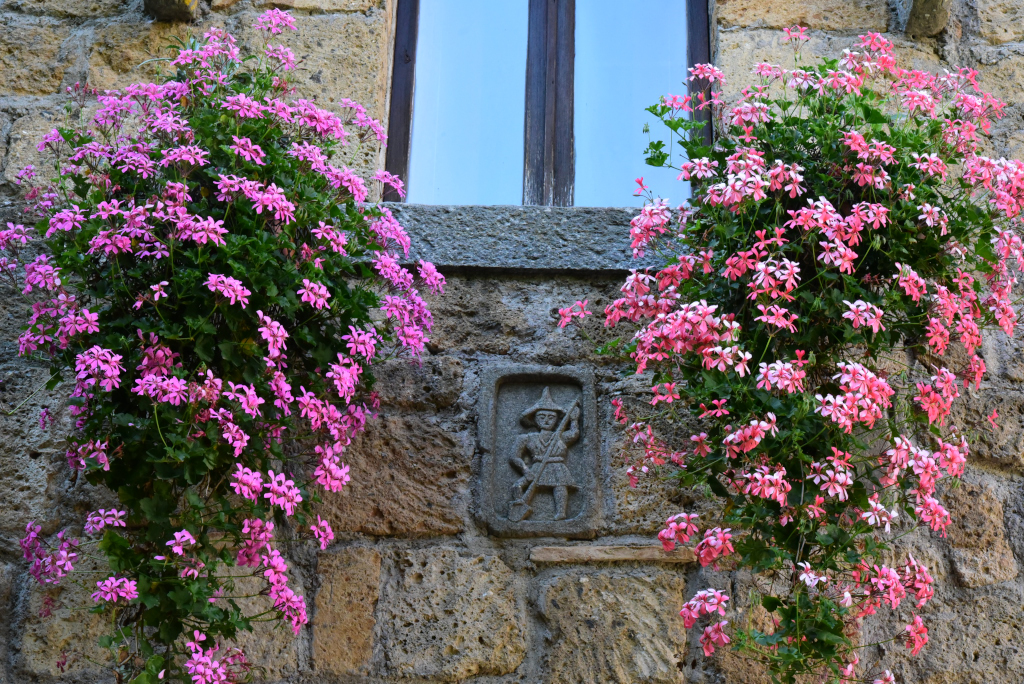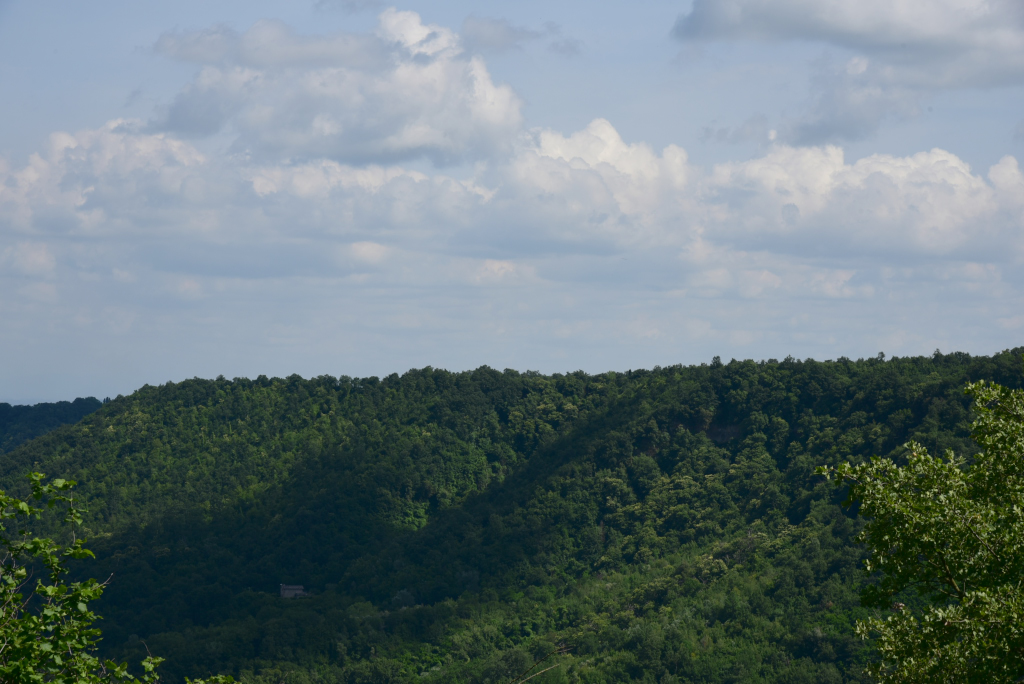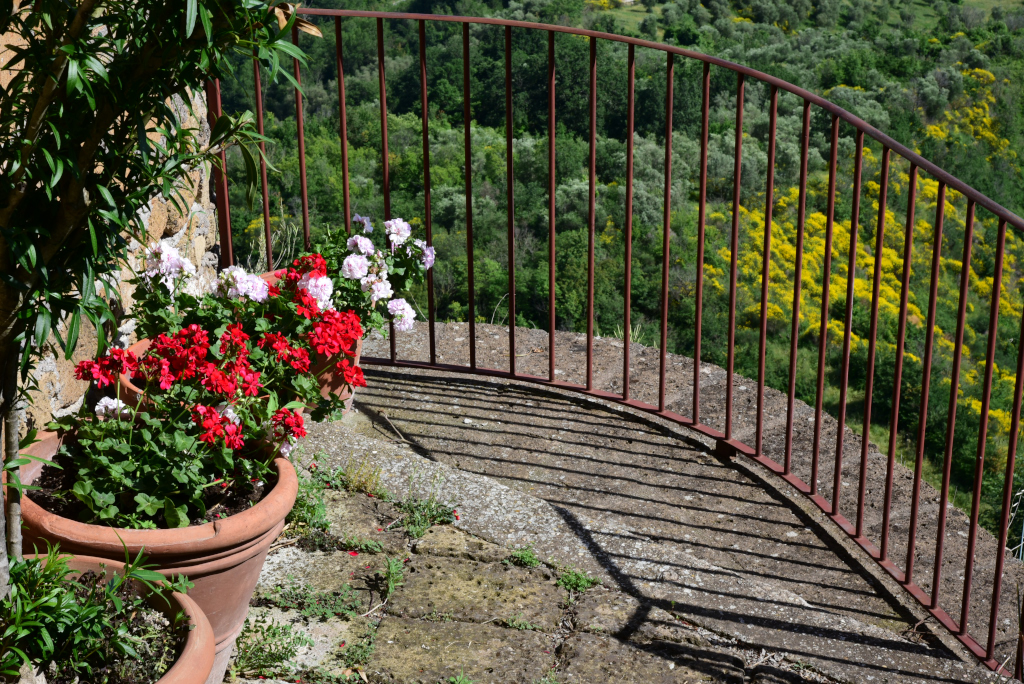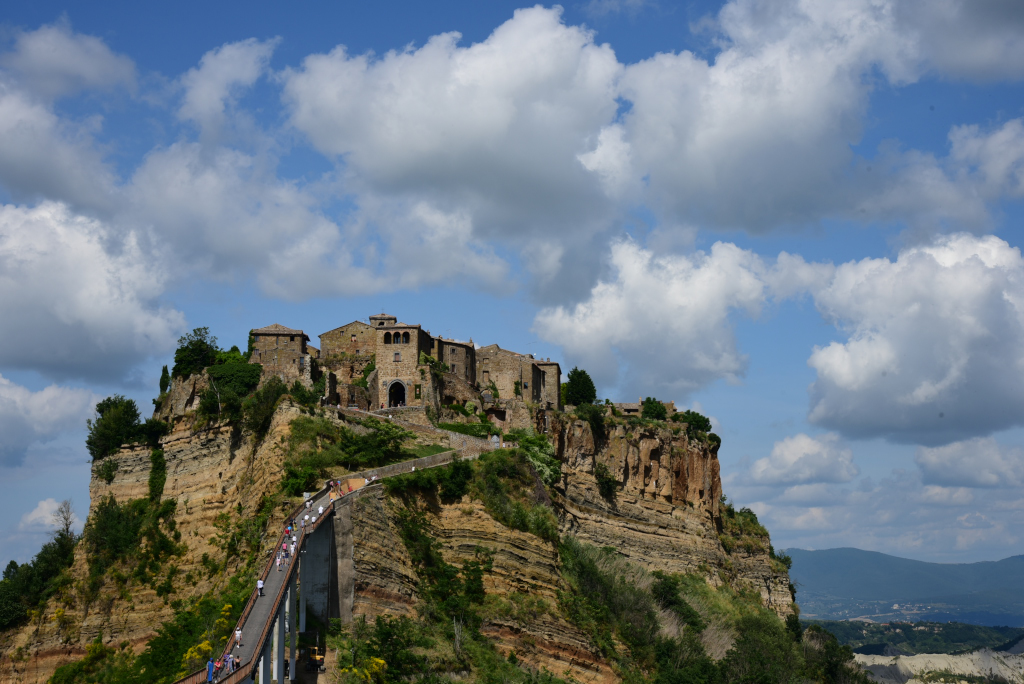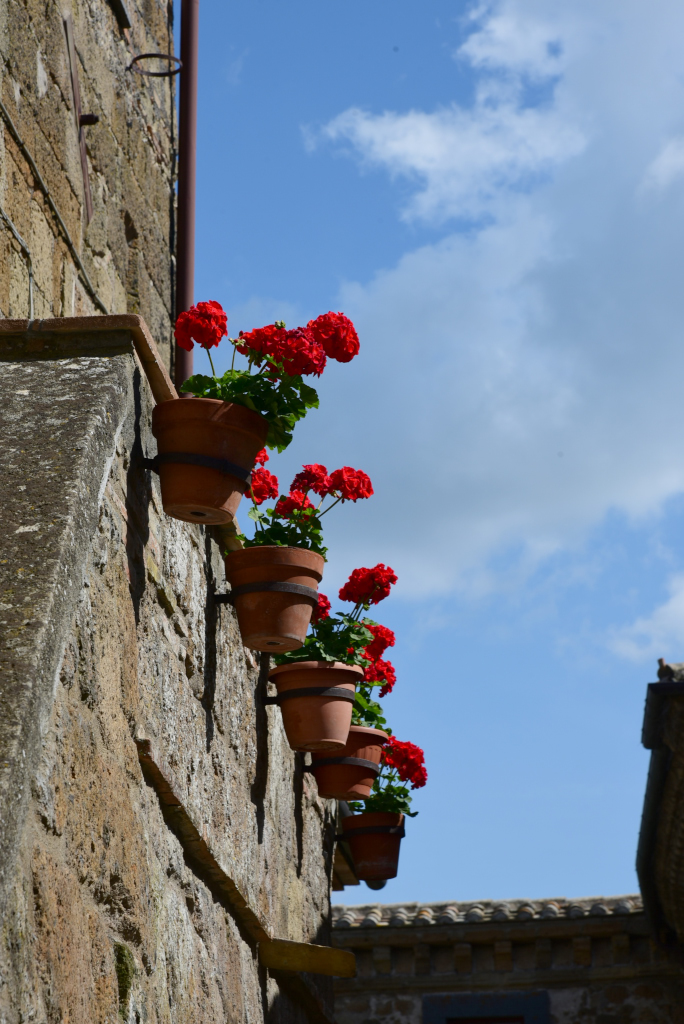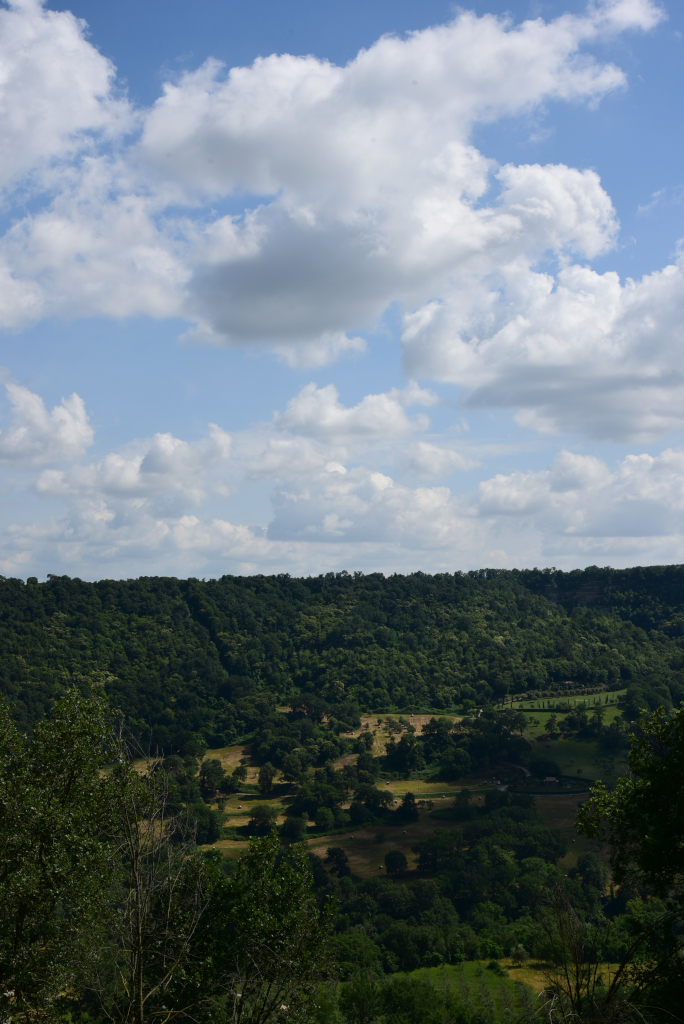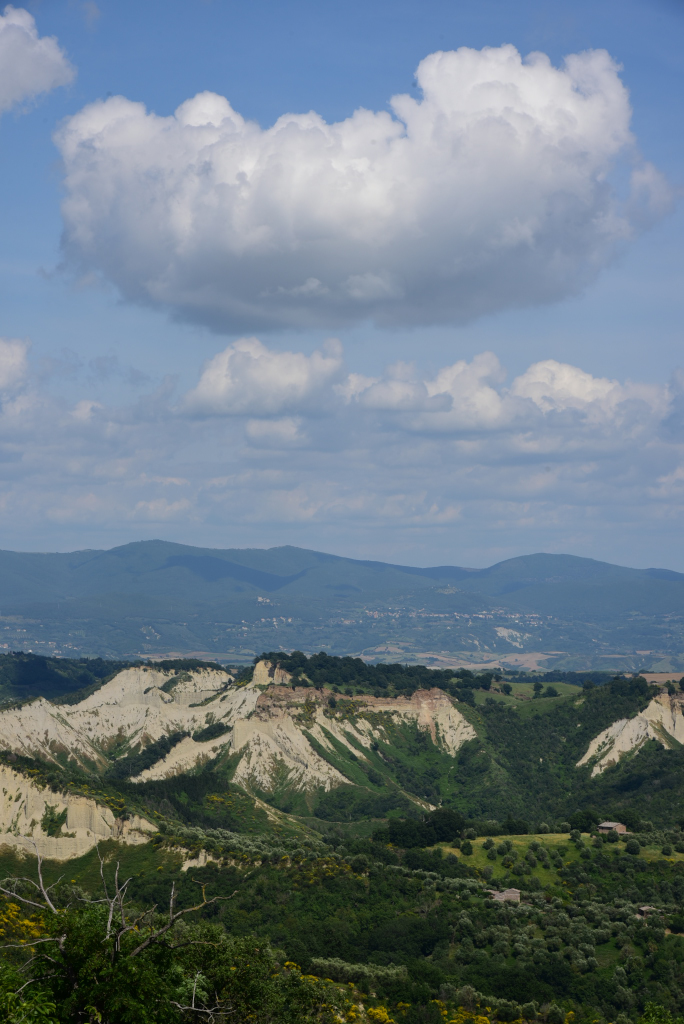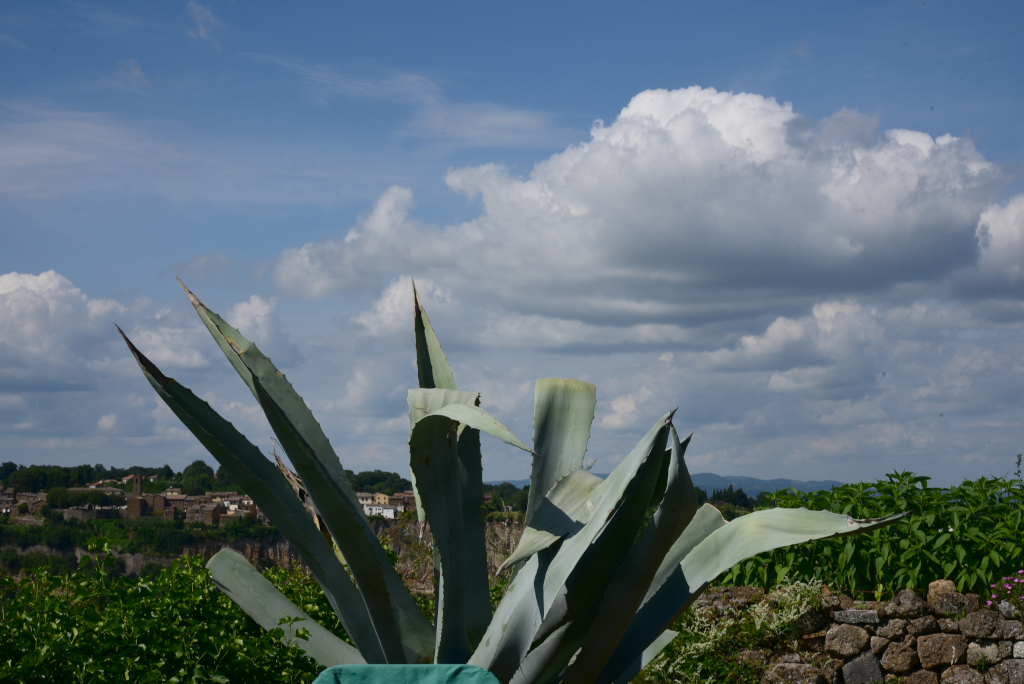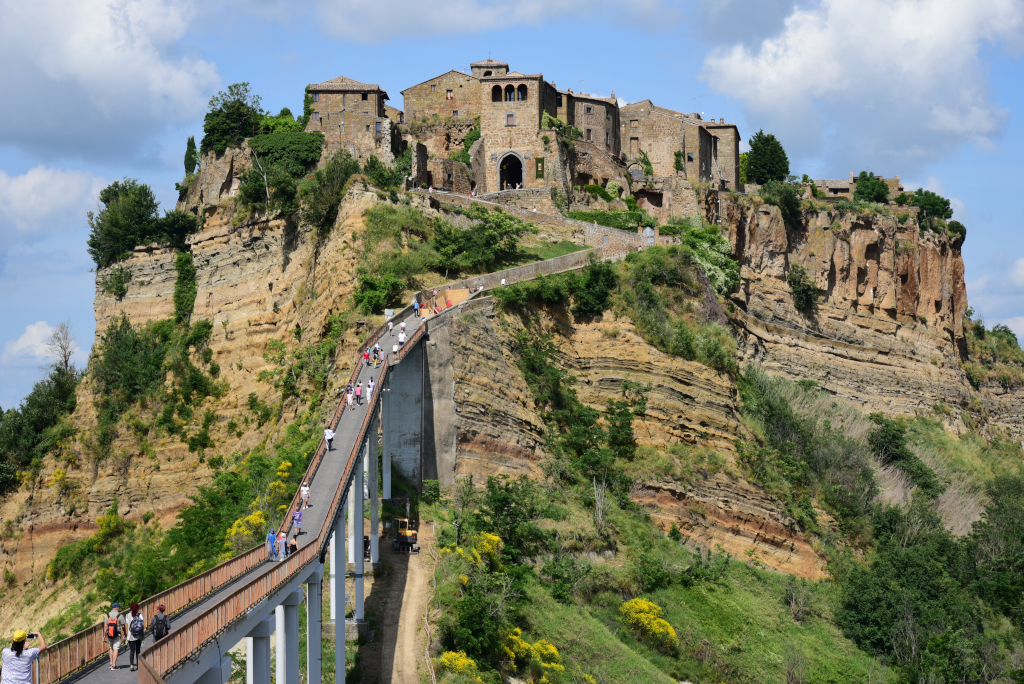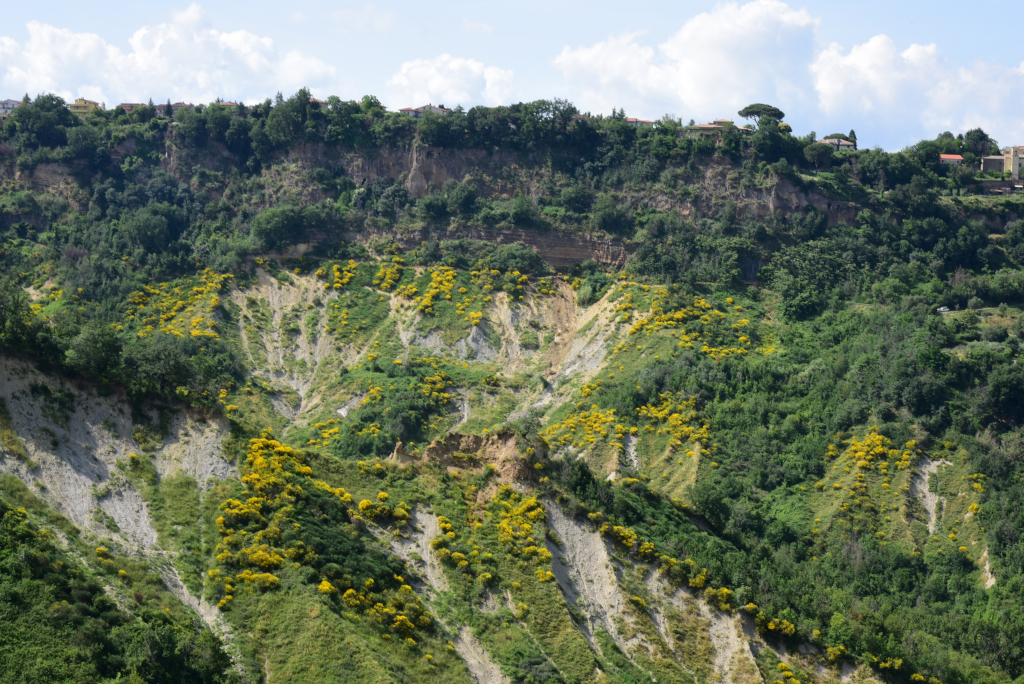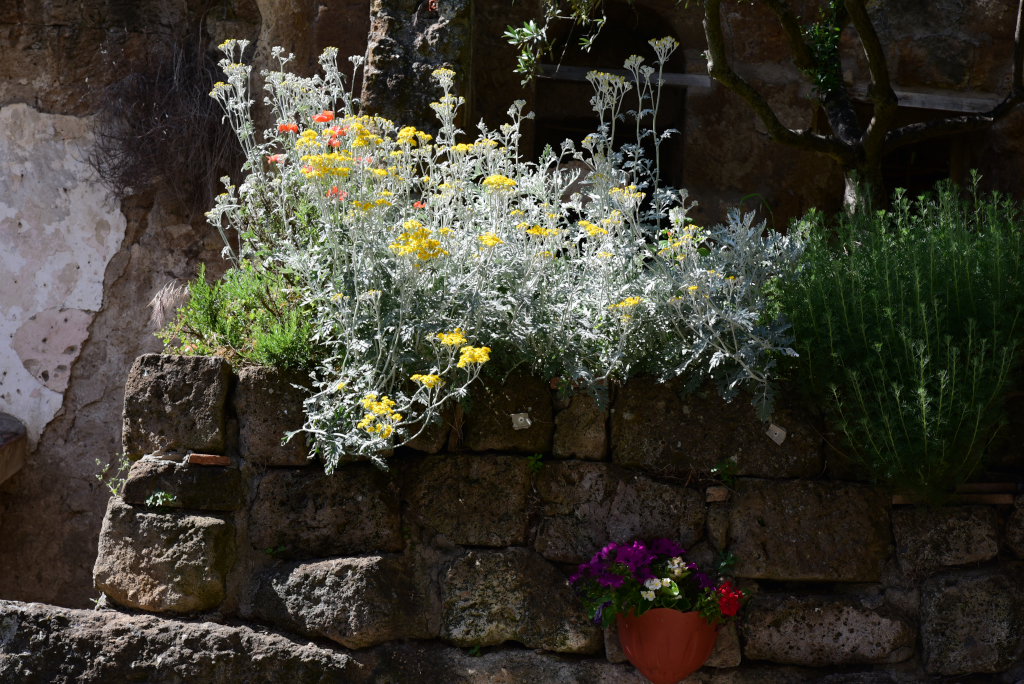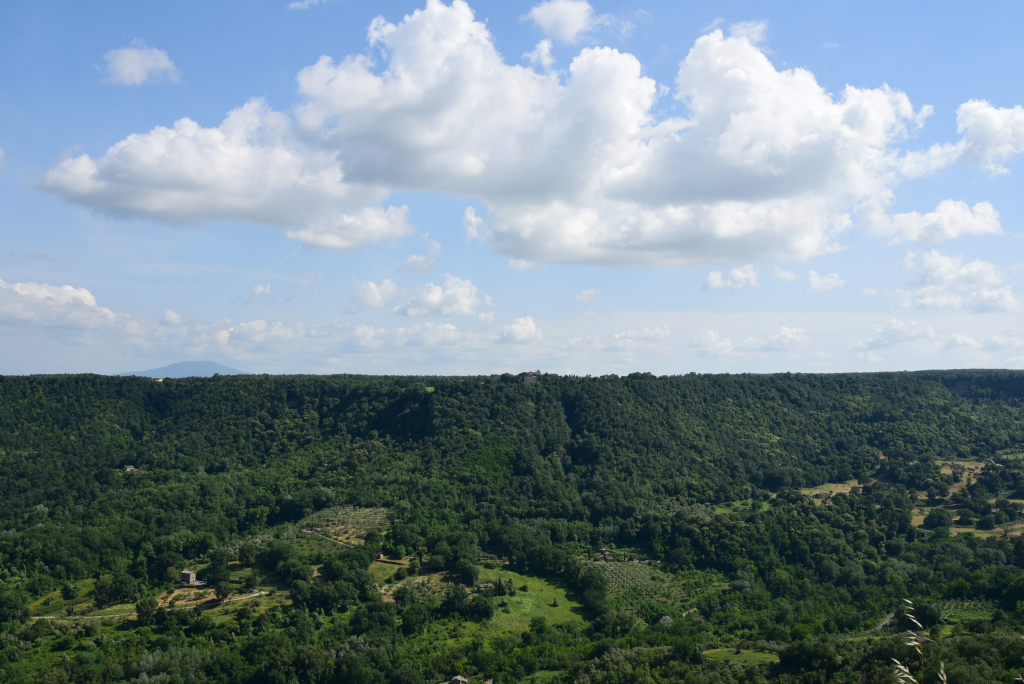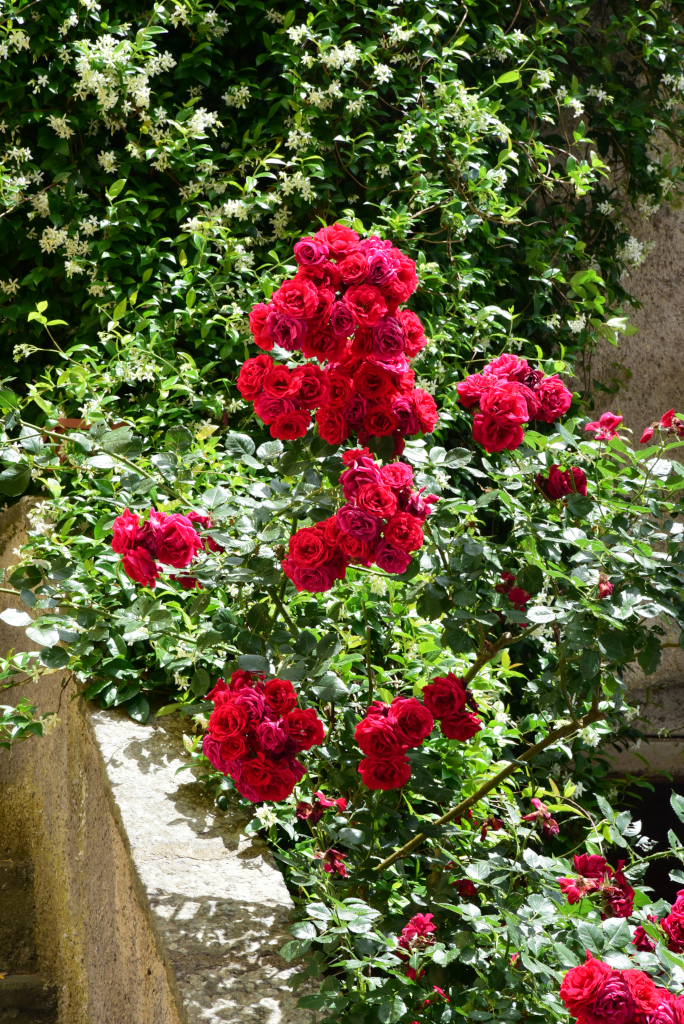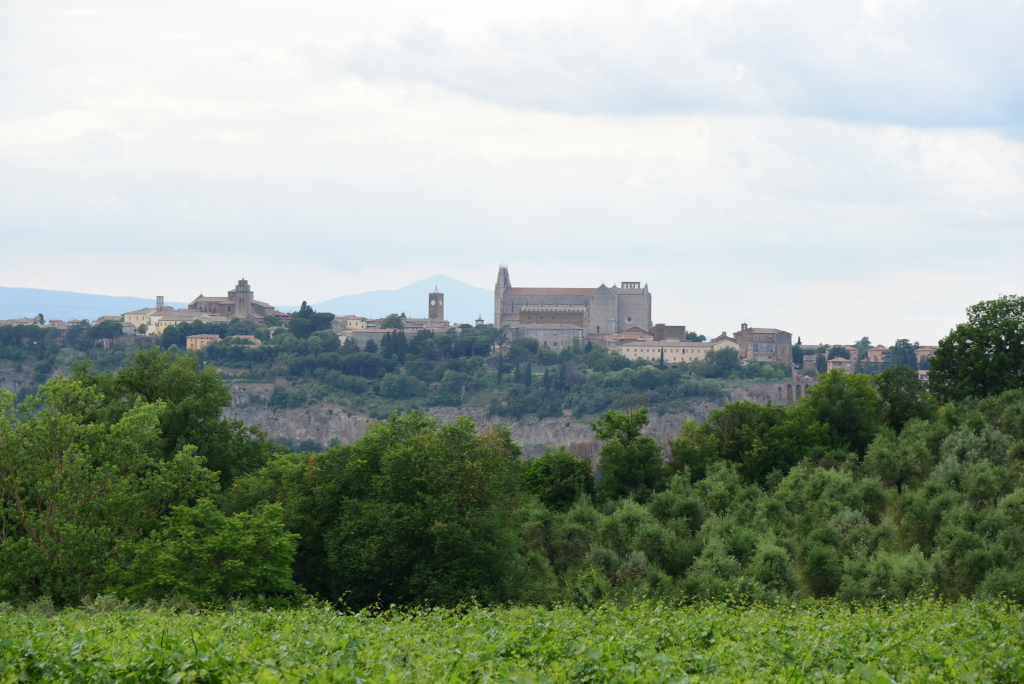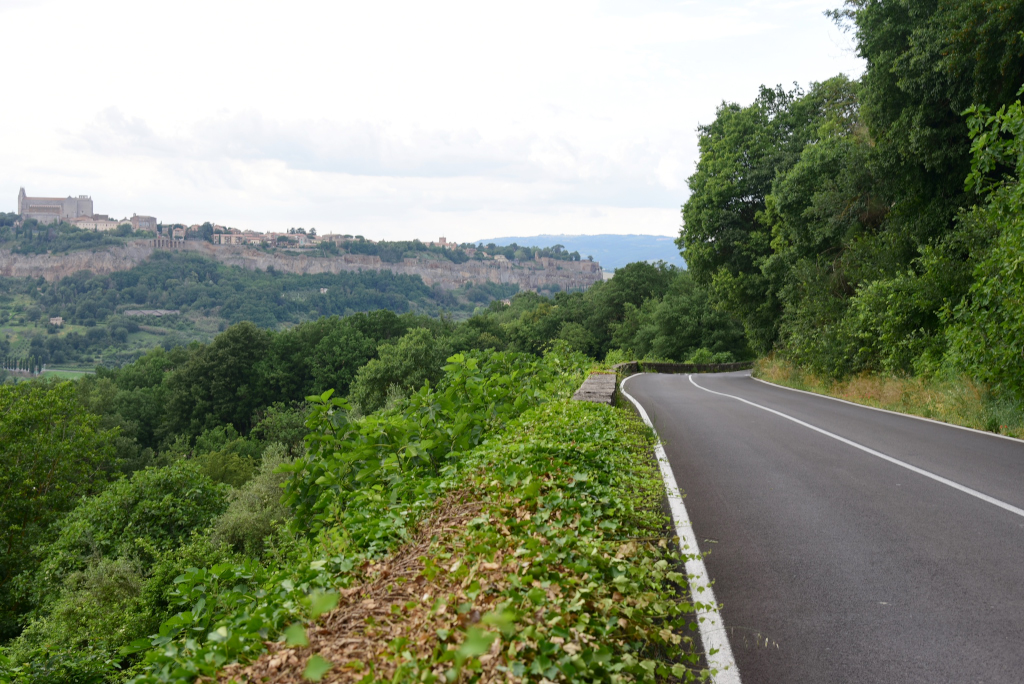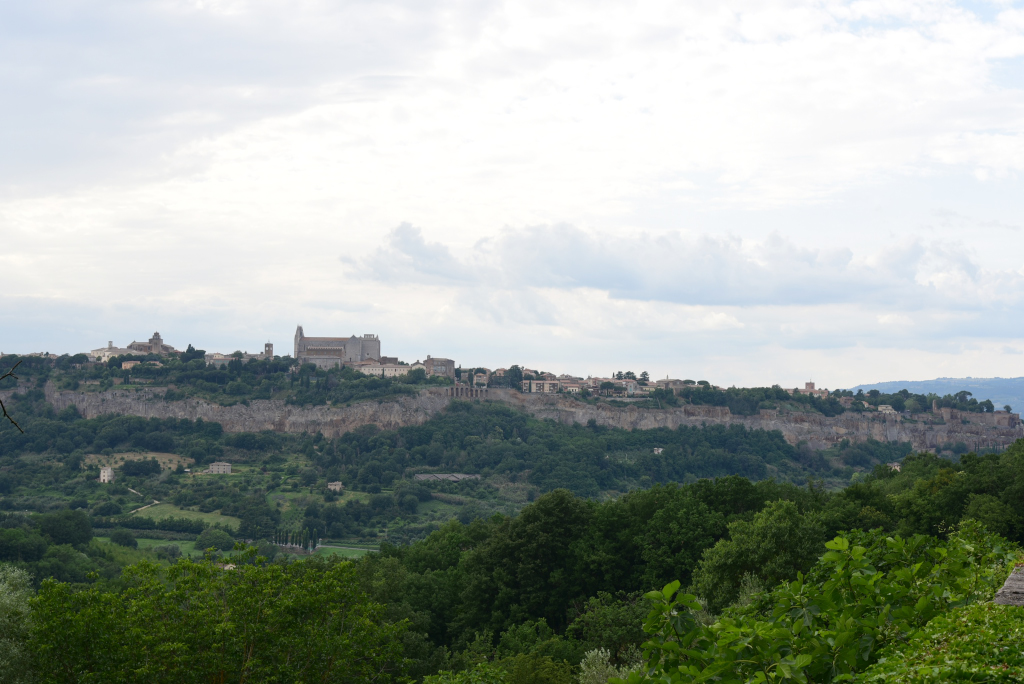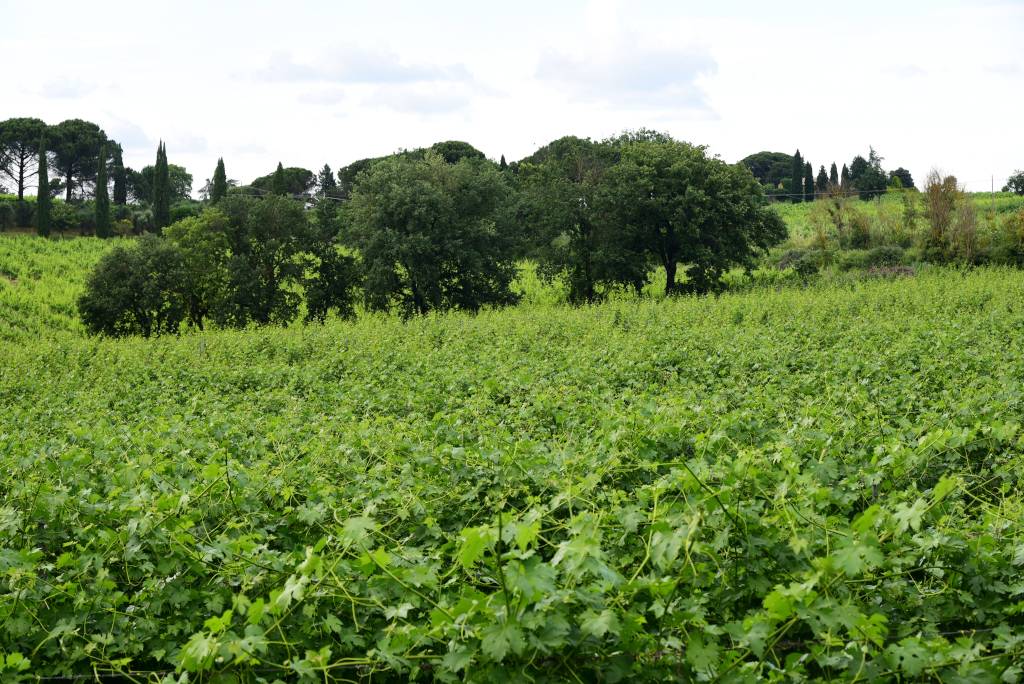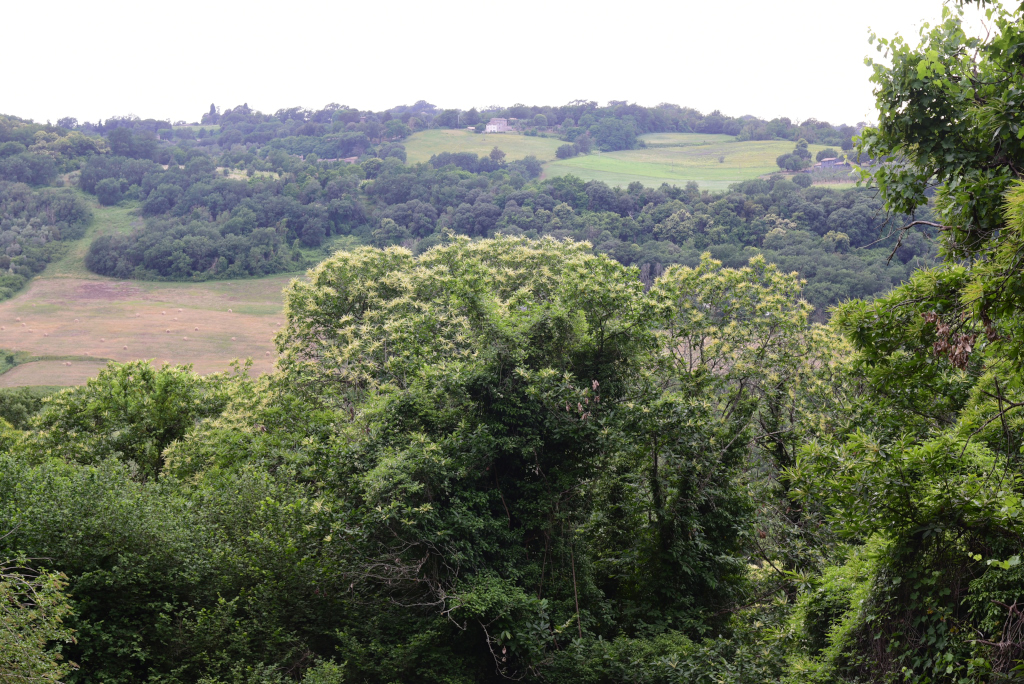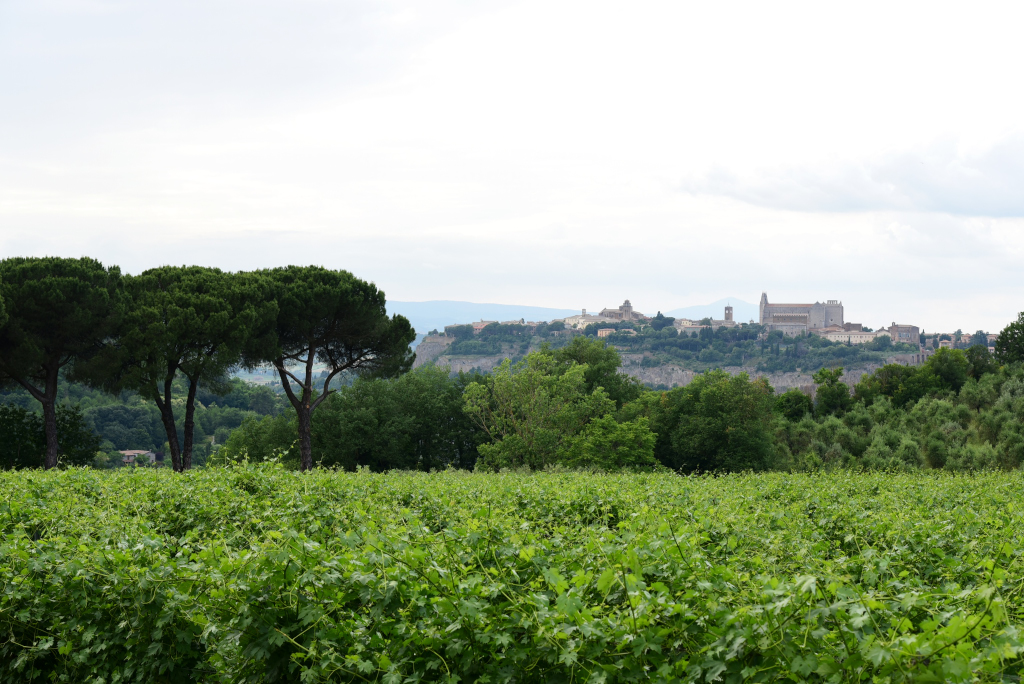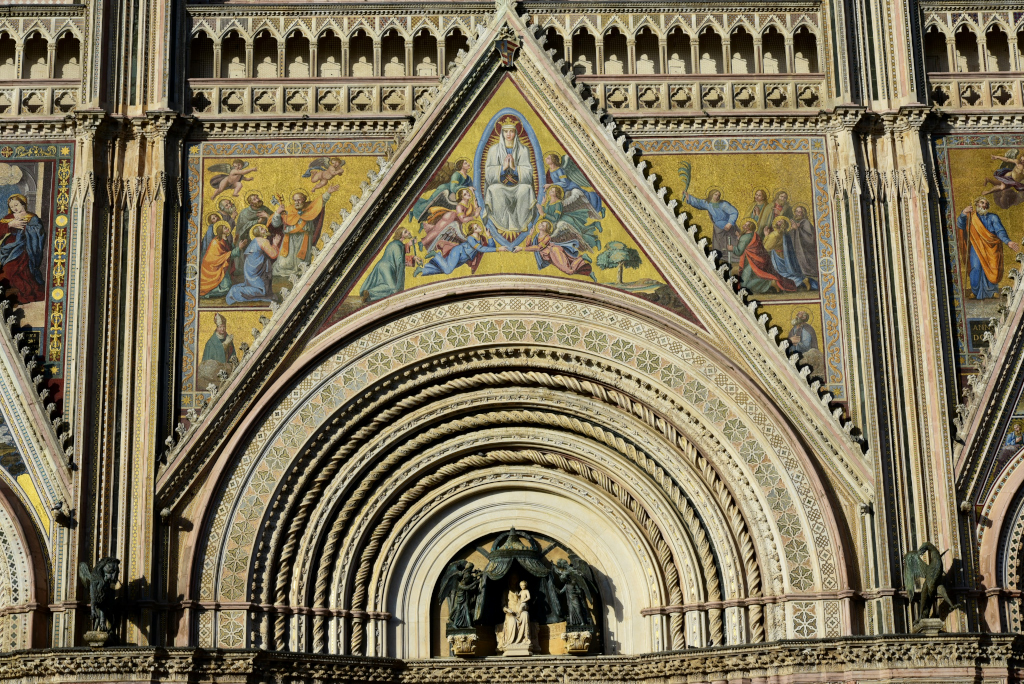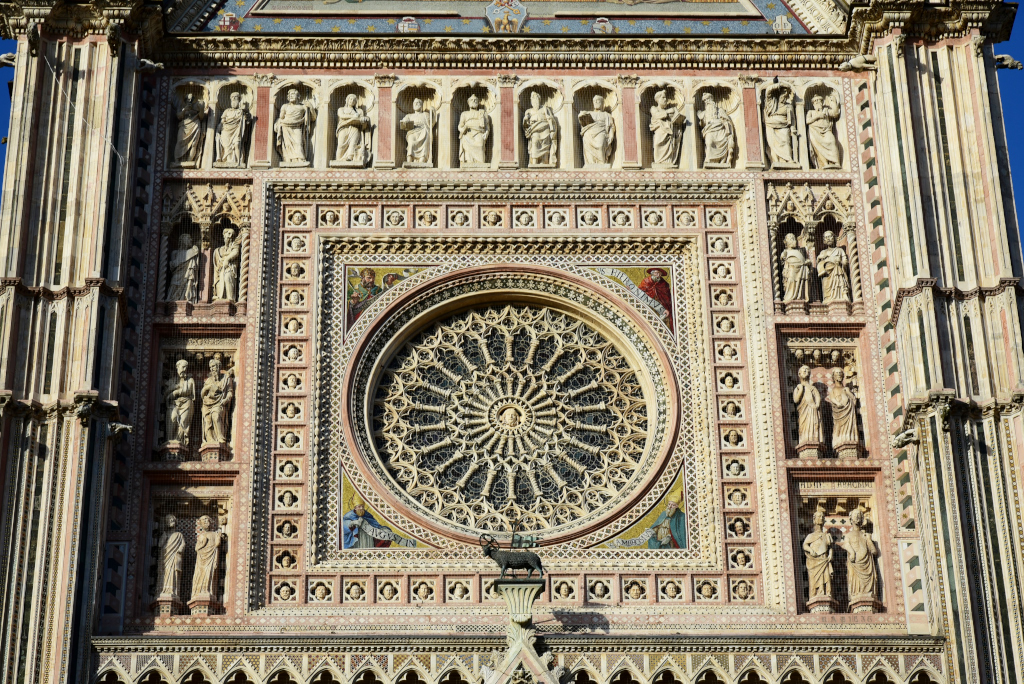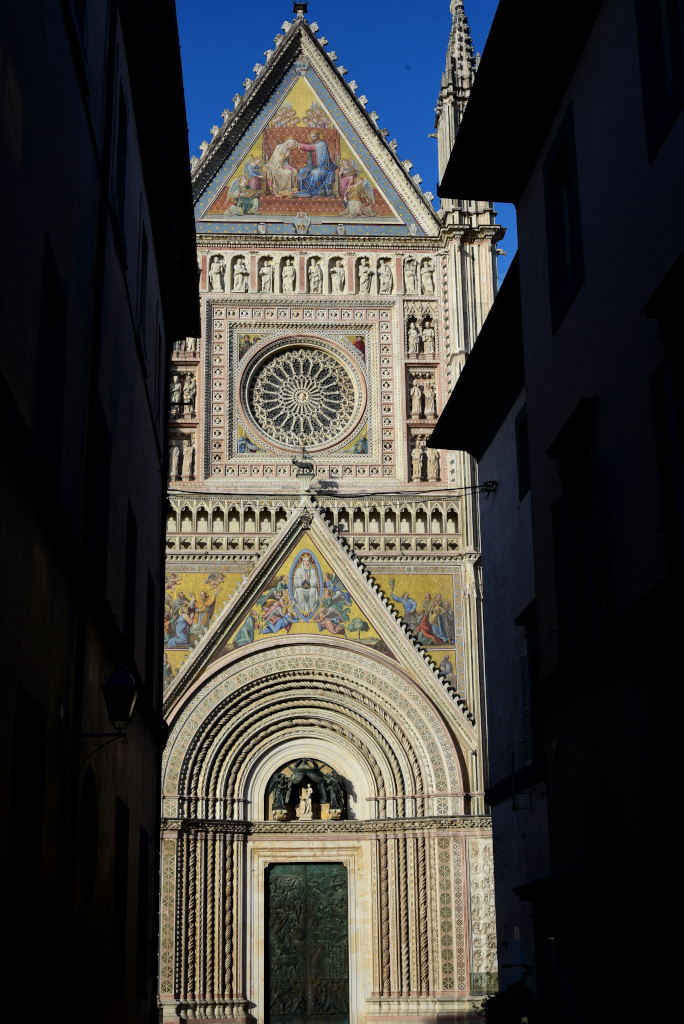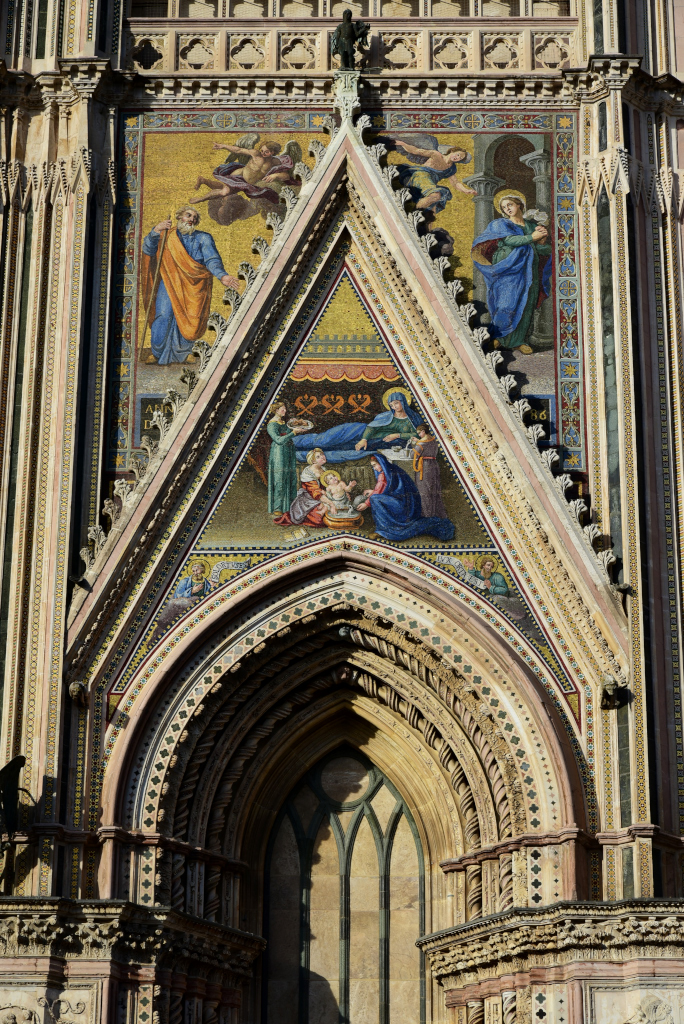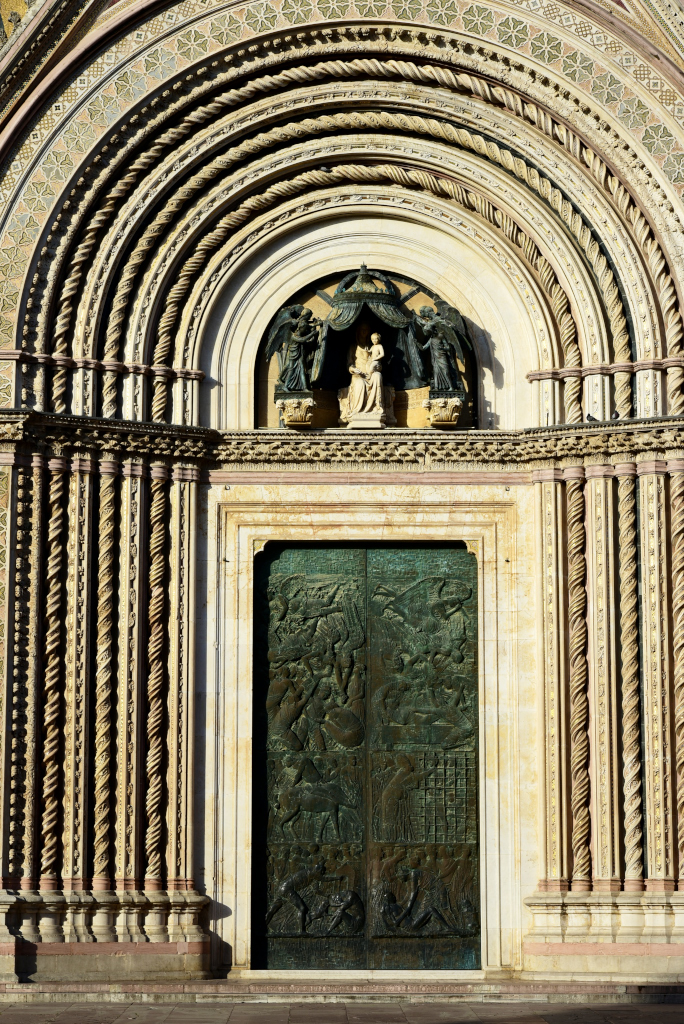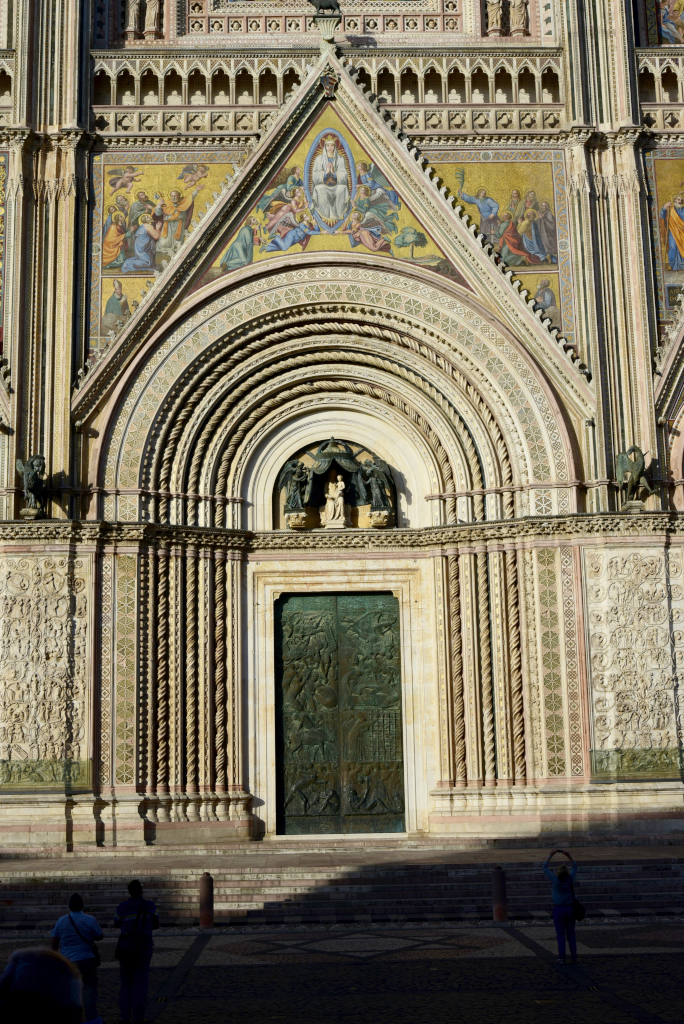June 6, 2018
The trip to Orvieto takes me past Montefiascone, in the southeastern corner of Lago di Bolsena, past Bagnoregio and the adjacent Civita di Bagnoregio, and onwards through the increasingly steep hills to the mountain city of Orvieto.
Civita occupies a mountaintop location that is geologically unstable, and due to the effects of erosion, the town was transplanted to neighboring Bagnoregio. Until recently, Civita di Bagnoregio faded into inevitable obscurity, but due to a recent stroke of successful marketing, it has become a leading tourist attraction in the region.
Civita di Bagnoregio occupies a striking position on top of a plateau of friable volcanic tuff overlooking the Tiber river valley. It is in constant danger of destruction as the edges of the plateau collapse due to erosion, leaving the buildings to crumble as their underlying support falls.
Civita was founded by Etruscans more than 2,500 years ago. Civita was the birthplace of Saint Bonaventure, who died in 1274, although the location of his boyhood house has long since fallen off the edge of the cliff. By the 16th century, Civita was beginning to decline, becoming eclipsed by its former suburb Bagnoregio.
During the barbarian invasions of Italy, between the sixth and ninth centuries, Civita di Bagnoregio was taken several times by the Ostrogoths and the Lombards. Charlemagne is said to have included it in the Patrimonium Petri, and the Emperor Louis I to have added it to the Papal States in 822.
At the end of the 17th century, the bishop and the municipal government were forced to move to Bagnoregio because of a major earthquake that accelerated the old town’s decline. At that time, the area was part of the Papal States.
The city is also much admired for its architecture spanning several hundred years. Civita di Bagnoregio owes much of its unaltered condition to its relative isolation; the town was able to withstand most intrusions of modernity as well as the destruction brought by two world wars. The population today varies from about 7 people in winter to more than 100 in summer.
Views of the city of Orvieto are predictably stunning.
The duomo of Orvieto is dedicated to the Assumption of the Virgin Mary and was constructed under the orders of Pope Urban IV to commemorate and provide a suitable home for the Corporal of Bolsena, a miracle which is said to have occurred in 1263 in the nearby town of Bolsena. The Gothic façade of the Orvieto Cathedral is one of the great masterpieces of the Late Middle Ages.
The most exciting and eye-catching part is its golden frontage, which is decorated by large bas-reliefs and statues with the symbols of the Evangelists. The bas-reliefs on the piers depict biblical stories from the Old and New Testament. They are considered among the most famous of all 14th-century sculpture. Above this decoration are mosaics created in the 14th century, representing major scenes from the life of the Virgin Mary.
(narrative excerpted from Wikipedia)

